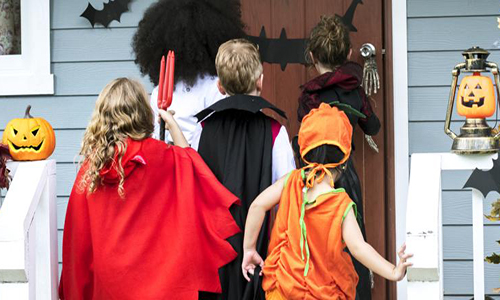- Free Consultation: (907) 277-3090 Tap Here to Call Us
Halloween Safety Month

Halloween Safety Month is upon us. October is designated Halloween Safety Month each year. The goals? Highlighting security measures, including making costumes visible and well-fitting, supervising trick-or-treaters, checking candy for safety, and ensuring the homes and yards are safe for visitors.
Before participating in Halloween events and activities, take time to review safety tips with your children and prepare them for potential risks. Remind kids they must watch for cars and be seen by drivers, to be wary of strangers, and to wait until they get home to eat treats. Stay safe and use caution when celebrating Halloween.
Costume And Makeup Safety Checks
Costume safety is a critical component to Halloween Safety Month. Check the ingredients of Halloween makeup and ensure it’s nontoxic. Keep makeup away from directly coming into contact with a child’s eyes, mouth, and nose. Test makeup on a small area of skin to ensure it doesn’t cause an irritation or allergic reaction. Be sure to thoroughly wash off all costume makeup before going to bed.
Look over costumes for loose strings, tears, and fasteners. Check the materials used to make costumes, wigs, and accessories and confirm they are fire-resistant. Despite marketing, some costumes may be dangerous or require modifications to be safe for children. Increase Halloween Safety and try on costumes to ensure they fit well and aren’t hazardous before going trick-or-treating.
Halloween Safety Tips
If you or your children are trick-or-treating, carry flashlights and wear reflective clothing. Increase Halloween safety even more – add reflective tape to costumes – ensuring others easily see children walking along dark or poorly lit roadways. Another option: instead of carrying a flashlight, tie glowsticks for children to treat bags and buckets. The best way to avoid being hit by a car? Stay visible to drivers.
Plan your children’s trick-or-treating route ahead of time and ensure all parents and children are familiar with where they’ll be walking. An adult should accompany young children along their trick-or-treating route to provide additional security. Remind children to stick together and not break into smaller groups. Walk along well-lit areas and avoid neighborhoods that don’t have streetlamps.
If your children are older and going without adult supervision, remind them to be wary of strangers. Teach your children to never enter a stranger’s home, even on Halloween. The distraction of scary decorations and possible Halloween activities can be alluring, but it’s always best to keep safety and security in mind.
If the weather is particularly chilly, bring gloves, mittens, or pocket-sized hand warmers along. Remember to wash your gloves or mittens after you get back home. Smaller children may need to take a break to warm up, rest, and rehydrate before continuing to trick-or-treat. Halloween safety includes scheduling stops along your route to avoid fatigue and be mindful of cold hands or feet.
Always Check Treats
Checking treats and throwing away contaminated or spoiled candy is key to added security. Discolored, torn, soiled, or loose wrappers are common indicators that the candy should be thrown out. Although it is unlikely to find harmful items or spoiled treats, parents should always check candy before allowing children to enjoy their haul.
Johnson Law has been serving Alaska injury victims for 30 years. It’s who we are. And while we hope you never need us… We’re here if you do. ~ Doug Johnson
Source: National Safety Counsel; and National Day Calendar
Image Source: Visit Anchorage







